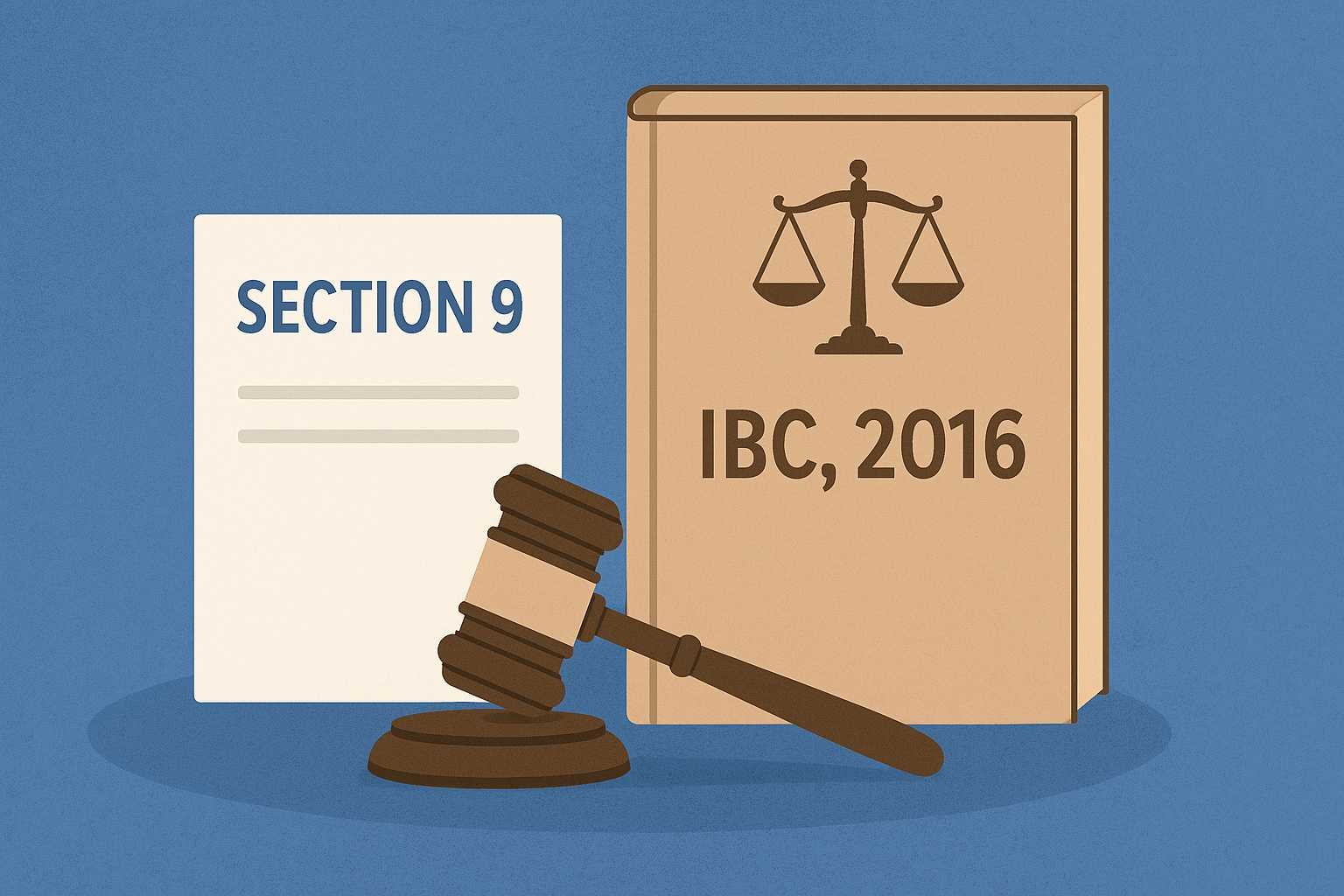On this page you will read detailed information about Section 509 IPC.
As you delve into the intricacies of Indian criminal law, you may encounter Section 509 of the Indian Penal Code (IPC). This provision addresses a specific offense that impacts personal dignity and public decorum. Understanding its scope and implications is crucial for legal professionals, law enforcement, and citizens alike. In this article, you will explore the key elements of Section 509 IPC, its historical context, and its relevance in modern society. By examining landmark cases and legal interpretations, you will gain valuable insights into how this law is applied and its role in protecting individuals from unwanted advances and offensive behavior.
What is Section 509 of the Indian Penal Code?
Section 509 of the Indian Penal Code (IPC) is a crucial legal provision designed to protect the dignity and modesty of women in India. This section, commonly referred to as section 509 ipc, specifically addresses “word, gesture or act intended to insult the modesty of a woman.”
Key Components of Section 509 of the Indian Penal Code
The section criminalizes various forms of behavior that are considered offensive to a woman’s modesty. These include:
- Uttering words
- Making sounds or gestures
- Exhibiting objects
- Intruding on a woman’s privacy
It’s important to note that the intention behind these actions is crucial. The offender must have intended to insult the woman’s modesty for the act to fall under this section.
Punishment Under Section 509 IPC
The section 509 ipc punishment is designed to serve as a deterrent against such offenses. Those found guilty under this section can face:
- Simple imprisonment for up to one year
- A fine
- Or both imprisonment and fine
Significance and Impact
509 ipc plays a vital role in addressing gender-based offenses and promoting respect for women in society. Its implementation has had significant societal impacts:
- It serves as a deterrent against acts that undermine women’s dignity.
- It empowers women to seek legal recourse in cases of harassment or humiliation.
- It contributes to fostering a culture of respect and gender equality.
In the contemporary context, Section 509 IPC has been interpreted to address emerging forms of harassment, such as online harassment and cyberbullying targeting women. This adaptation ensures the law remains relevant in the face of evolving social dynamics and changing gender equations.
Key Elements of the Offense Under Section 509 IPC
Intent to Insult a Woman’s Modesty
The crux of Section 509 IPC lies in the accused’s intention to insult the modesty of a woman. This intent is crucial and must be established for the offense to be punishable. Courts have interpreted “modesty” as an innate sense of self-respect and decency possessed by women. The subjective nature of modesty can pose challenges in consistent application of the law, as what one woman finds insulting may differ from another’s perspective.
Methods of Insulting Modesty
The offense under Section 509 IPC can be committed through various means:
- Uttering words intended to be heard by the woman
- Making sounds or gestures visible to her
- Exhibiting objects meant to be seen by the woman
- Intruding upon her privacy
These actions must be done with the specific intent to insult the woman’s modesty. Mere use of abusive language may not be sufficient if it doesn’t specifically target her modesty.
Scope and Application
Section 509 IPC has a wide-ranging application, covering various forms of harassment including workplace incidents, eve-teasing, and even cyber-crimes against women. It provides criminal remedies alongside civil ones available under other laws. The provision aims to protect women’s dignity and ensure they are free from verbal, non-verbal, and privacy-intrusive harassment.
Section 509 of the Indian Penal Code Punishment
The Section 509 IPC punishment includes simple imprisonment for up to three years, a fine, or both. The Criminal Law (Amendment) Act, 2013 made imprisonment mandatory and increased the maximum term. The offense is cognizable, allowing police to make arrests without a warrant, and it is also bailable and non-compoundable.
By understanding these key elements, you can better grasp the scope and application of Section 509 IPC in protecting women’s modesty and dignity.
In the previous post, we had shared information about Understanding the Vishaka Guidelines Against Workplace Sexual Harassment, so read that post also.
Examples of Acts That Constitute Offenses
Under section 509 IPC, several acts can be considered offenses if they are intended to insult the modesty of a woman. Understanding these examples is crucial for both women to recognize when their rights are being violated and for individuals to avoid engaging in such behavior.
Verbal and Non-Verbal Communication
Words, sounds, or gestures that are meant to insult a woman’s modesty fall under the purview of section 509 IPC. This can include:
- Using obscene or derogatory language directed at a woman
- Making lewd gestures or inappropriate physical signals
- Uttering sounds with sexual connotations
According to legal experts, the context and circumstances in which these acts occur are critical in determining whether they constitute an offense.
Privacy Intrusion and Unwanted Advances
Actions that intrude upon a woman’s privacy or make her feel violated are also considered offenses under this section. Examples include:
- Unwelcome sexual advances or propositions
- Displaying obscene materials to a woman without her consent
- Stalking or following a woman against her wishes
It’s important to note that 509 IPC applies universally and is not limited to specific environments like workplaces.
Digital Harassment
With the rise of technology, section 509 IPC punishment has been extended to cover digital forms of harassment. This can include:
- Sending unsolicited explicit messages or images
- Making offensive comments on social media platforms
- Using electronic means to stalk or intimidate a woman
The state of Chhattisgarh has even introduced Section 509-B specifically addressing sexual harassment through electronic means, highlighting the evolving nature of this offense.
Understanding these examples can help in creating a more respectful and safe environment for women in all spheres of life.
Punishment for Conviction Under Section 509 of the Indian Penal Code
Legal Consequences
The punishment for conviction under section 509 IPC is clearly defined in the Indian Penal Code. According to the law, individuals found guilty of insulting the modesty of a woman through words, gestures, sounds, or intrusion into her privacy can face serious repercussions. The section 509 IPC punishment includes simple imprisonment for a term which may extend up to three years, a fine, or both.
Factors Influencing Sentencing
When determining the appropriate punishment, courts consider several factors. The gravity of the conduct and its impact on public morality play a significant role in the sentencing decision. Judges may also take into account the circumstances of the offense, the accused’s prior record, and any mitigating factors presented during the trial.
Significance and Deterrence
The 509 IPC serves as a crucial legal provision aimed at protecting women’s dignity and honor. It acts as a deterrent against acts that undermine the modesty of women, empowering them to assert their rights and seek legal recourse. The potential for imprisonment and financial penalties underscores the seriousness with which the Indian legal system views such offenses.
Contemporary Relevance
In today’s digital age, Section 509 IPC has taken on renewed importance. It now addresses emerging forms of harassment, such as online and cyberbullying targeting women. The #MeToo movement and increased awareness of gender-based violence have further highlighted the need for stringent legal provisions like Section 509 IPC to combat such offenses effectively.
Comparison With Other Similar Provisions
Section 509 IPC vs. Section 354 IPC
While both Section 509 IPC and Section 354 IPC deal with offenses against women’s modesty, they differ significantly in scope and severity. Section 509 IPC criminalizes words, gestures, or acts intended to insult a woman’s modesty, with a punishment of up to 3 years imprisonment and a fine. In contrast, Section 354 IPC addresses physical assault or criminal force used to outrage a woman’s modesty, carrying a harsher penalty of up to 2 years imprisonment.
Section 509 IPC and Workplace Harassment Laws
The Section 509 IPC punishment remains relevant even after the enactment of the Sexual Harassment of Women at Workplace Act (POSH Act) in 2013. While the POSH Act focuses on civil remedies, Section 509 IPC provides criminal recourse for victims. This provision is particularly useful in addressing harassment occurring outside the workplace, where the POSH Act may not apply.
Comparison with International Laws
When comparing Section 509 IPC to international laws, some differences emerge. For instance, U.S. laws on workplace sexual harassment have a broader definition, covering any discrimination based on sex, not just sexually explicit conduct. Additionally, U.S. laws protect employees of all genders, while India’s POSH Act primarily focuses on women employees.
Recent Developments and Future Outlook
The proposed Bharatiya Nyaya Sanhita 2023 aims to update and streamline various provisions of the Indian Penal Code, including those related to offenses against women. According to the proposed changes, new provisions like “voyeurism” and “stalking” are being introduced, potentially expanding the scope of protection offered by laws like Section 509 IPC. These updates reflect an evolving understanding of gender-based offenses and the need for comprehensive legal frameworks to address them effectively.
Landmark Judicial Decisions on Section 509
Defining Modesty and Intent
The interpretation of Section 509 IPC has been shaped by several landmark judicial decisions. In the case of State of Punjab vs. Major Singh (1966), the Supreme Court defined “modesty” as an attribute inherent to all female human beings, regardless of age. This ruling emphasized that the essence of a woman’s modesty is her sex, which Section 509 IPC aims to protect.
Another crucial judgment came in Miss Rupan Deol Bajaj vs. KPS Gill (1995), where the Supreme Court upheld the conviction of a senior police officer for making unwelcome advances towards a senior IAS officer. This case highlighted that any unwelcome physical or verbal behavior intended to insult a woman’s modesty falls under the purview of Section 509 IPC.
Expanding the Scope of Protection
The judiciary has consistently worked to broaden the scope of Section 509 IPC punishment. In State of Maharashtra vs. Madhukar Narayan Mardikar (1991), the Supreme Court reinforced that even a woman of “easy virtue” is entitled to privacy and protection under Section 509 IPC. This judgment emphasized that the law protects all women, regardless of their background, from insults to their modesty.
Modern Interpretations
In recent years, courts have adapted Section 509 IPC to address contemporary issues. The Bombay High Court ruled that objectionable words written in an email or on social media can be penalized under this section, extending its application to the digital realm. Additionally, the very act of throwing a chit professing love on a woman’s person has been deemed as outraging her modesty under Section 509.
These landmark decisions have not only shaped the judicial interpretation of “modesty” under Section 509 IPC but have also established it as a powerful tool for protecting women’s dignity in various contexts, both offline and online.
How to File a Complaint Under Section 509
Initiating the Complaint Process
To file a complaint under Section 509 IPC, which deals with words, gestures, or acts intended to insult the modesty of a woman, you should first approach your nearest police station. Provide a detailed account of the incident, including the date, time, location, and description of what transpired. If known, include the identity of the accused. The police will record your statement and register a First Information Report (FIR), which is crucial in initiating the legal process.
Key Elements of the Complaint
When filing your complaint, ensure you clearly articulate how the accused’s actions align with the essential elements of Section 509 IPC. These include:
- The accused’s intention to insult your modesty
- The specific means used, such as uttering words, making sounds/gestures, exhibiting objects, or intruding on your privacy
Providing concrete examples and any available evidence will strengthen your case.
Legal Process and Potential Outcomes
After filing the FIR, the police will investigate the case and gather evidence. They may record statements from witnesses and collect any physical or digital proof. Based on their findings, they will submit a charge sheet to the court, initiating the judicial process.
It’s important to note that Section 509 IPC punishment can include simple imprisonment for up to three years, a fine, or both. The court considers factors like the gravity of the conduct and its societal impact when determining the sentence.
Remember, while filing a complaint under 509 IPC can be challenging, it’s a crucial step in seeking justice and deterring such behavior. Don’t hesitate to seek support from legal professionals or women’s rights organizations throughout this process.
Challenges in Enforcement of Section 509
Proving Intent and Defining “Modesty”
One of the primary challenges in enforcing Section 509 IPC is the difficulty in proving the accused’s intention to insult a woman’s modesty. The concept of “modesty” itself is subjective and open to interpretation, leading to inconsistencies in the application of the law. Courts have struggled to define “modesty”, making it challenging to establish criminal liability in many cases. This ambiguity can result in varied judicial interpretations and outcomes.
Underreporting and Social Stigma
Many incidents falling under Section 509 IPC go unreported due to social stigma and fear of retaliation. Women often hesitate to come forward because of the deeply rooted patriarchal norms and victim-blaming culture prevalent in society. This reluctance to report such offenses hampers the effective enforcement of the law and allows perpetrators to escape punishment.
Evolving Challenges in the Digital Age
The rise of cyber offenses poses new challenges to the enforcement of Section 509 IPC. While the law has been expanded to include electronic forms of harassment, keeping pace with rapidly evolving technology remains a significant hurdle. Law enforcement agencies often lack the necessary expertise and resources to effectively investigate and prosecute digital offenses, creating a gap in the protection offered by Section 509 IPC.
Gender-Specific Nature and Limited Scope
The gender-specific nature of Section 509 IPC, which only protects women, raises concerns about its inclusivity. This limitation excludes men and transgender individuals from its protection, potentially leaving them vulnerable to similar offenses. Additionally, the narrow scope of the section may not comprehensively address all forms of harassment, creating loopholes that offenders can exploit.
By addressing these challenges through legal reforms, improved enforcement mechanisms, and increased public awareness, the effectiveness of Section 509 IPC punishment can be enhanced, providing better protection against offenses that insult the modesty of women.
FAQs on Section 509 of the Indian Penal Code
Section 509 of the Indian Penal Code (IPC) criminalizes any word, gesture, or act intended to insult the modesty of a woman. This includes verbal harassment, lewd gestures, inappropriate touching, stalking, or any action that infringes on a woman’s personal space and dignity. According to legal experts, the offense also covers cyber-related incidents, such as unsolicited sharing of intimate images or online harassment that insults a woman’s modesty.
The section 509 ipc punishment includes simple imprisonment for up to 3 years, a fine, or both. The court considers factors such as the gravity of the conduct and its impact on public morality when determining the sentence. It’s important to note that the offense is cognizable, bailable, and compoundable.
A victim can seek remedy by filing an FIR with the police or a complaint before a magistrate. It’s advisable to document the incident, seek medical attention if necessary, and collect any available evidence. However, challenges in enforcement may include difficulties in reporting and proving offenses, fear of social stigma, and lack of evidence.
Yes, 509 ipc remains relevant even in the digital age. Recent cases have demonstrated its applicability to online harassment and indecent gestures in digital spaces. For instance, the State of Tamil Nadu v. Suhas Katti (2004) case showed how Section 509 can be applied to address online harassment targeting women.
The essential elements are the intention of the accused to insult the modesty of the woman and the means used to give effect to this intention. Legal precedents have established that the intention of the accused is crucial, and the reaction of the victim is relevant. However, mere use of abusive language may not be sufficient to attract Section 509 without proof of intention to insult the woman’s modesty.
Conclusion
As you’ve seen, Section 509 of the Indian Penal Code serves an important purpose in addressing issues of sexual harassment and protecting women’s dignity. While the law provides a legal framework for prosecuting offenders, its effectiveness ultimately depends on proper implementation and a shift in societal attitudes. Moving forward, it’s crucial to raise awareness about this provision, encourage reporting of incidents, and ensure swift action against perpetrators. By understanding Section 509 IPC and its implications, you can play a role in creating a safer environment for women and promoting respect and equality in society. Remember, combating sexual harassment requires collective effort and vigilance from all members of the community.
Disclaimer
The information and services on this website are not intended to and shall not be used as legal advice. You should consult a Legal Professional for any legal or solicited advice. While we have good faith and our own independent research to every information listed on the website and do our best to ensure that the data provided is accurate. However, we do not guarantee the information provided is accurate and make no representation or warranty of any kind, express or implied, regarding the accuracy, adequacy, validity, reliability, availability, or completeness of any information on the Site. UNDER NO CIRCUMSTANCES SHALL WE HAVE ANY LIABILITY TO YOU FOR ANY LOSS OR DAMAGE OF ANY KIND INCURRED AS A RESULT OR RELIANCE ON ANY INFORMATION PROVIDED ON THE SITE. YOUR USE OF THE SITE AND YOUR RELIANCE ON ANY INFORMATION ON THE SITE IS SOLELY AT YOUR OWN RISK. Comments on this website are the sole responsibility of their writers so the accuracy, completeness, veracity, honesty, factuality and politeness of comments are not guaranteed.
So friends, today we talked about Section 509 IPC, hope you liked our post.
If you liked the information about Section 509 IPC, then definitely share this article with your friends.
Knowing about laws can make you feel super smart ! If you find value in the content you may consider joining our not for profit Legal Community ! You can ask unlimited questions on WhatsApp and get answers. You can DM or send your name & number to 8208309918 on WhatsApp








